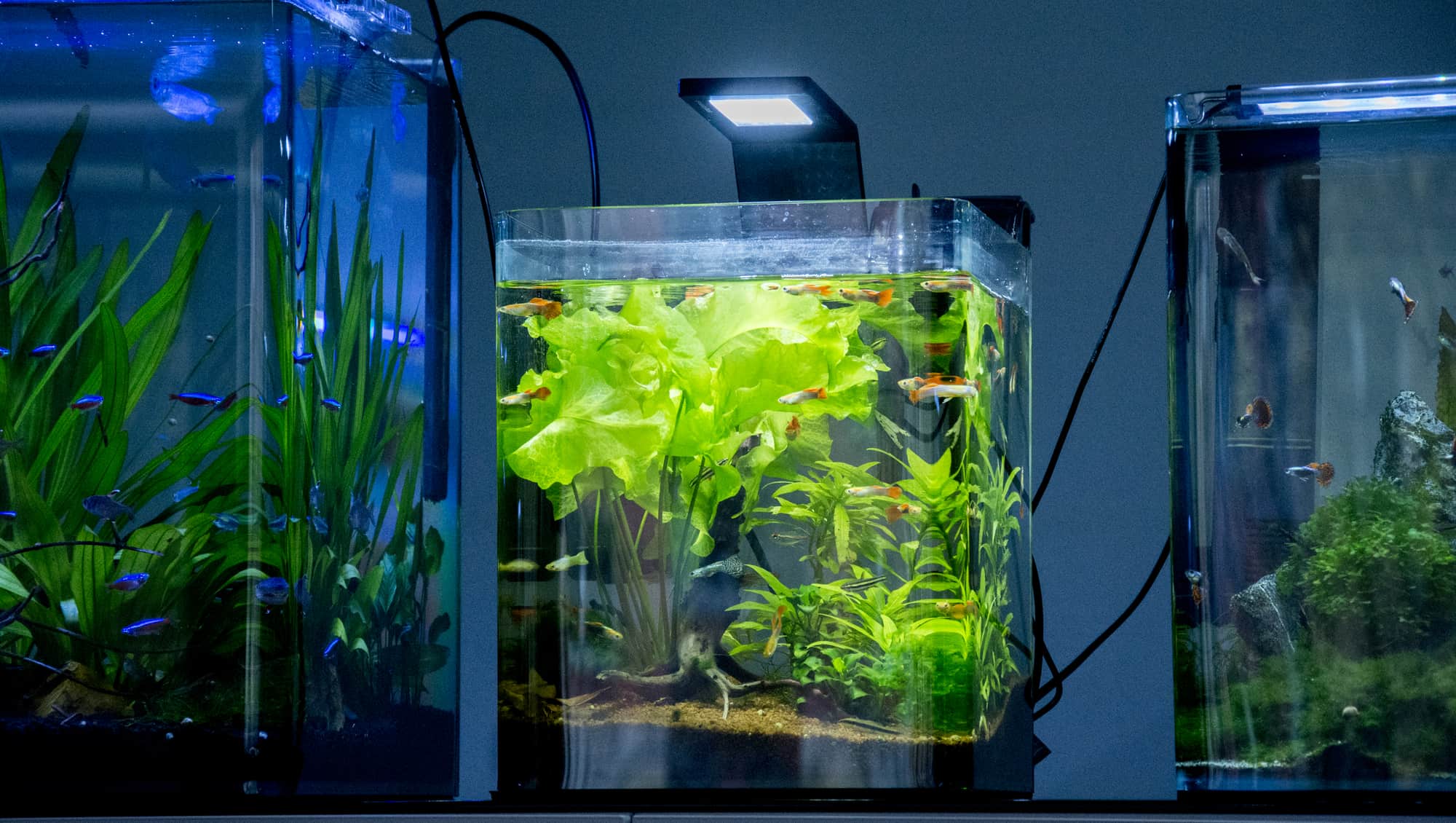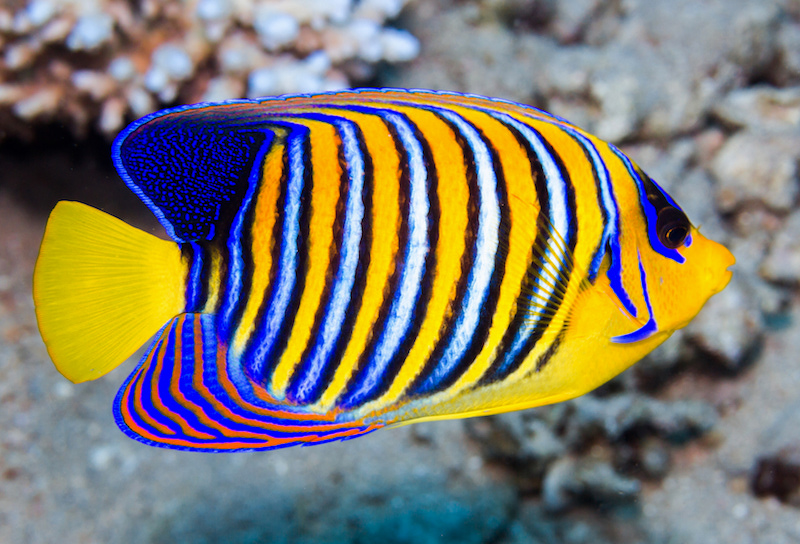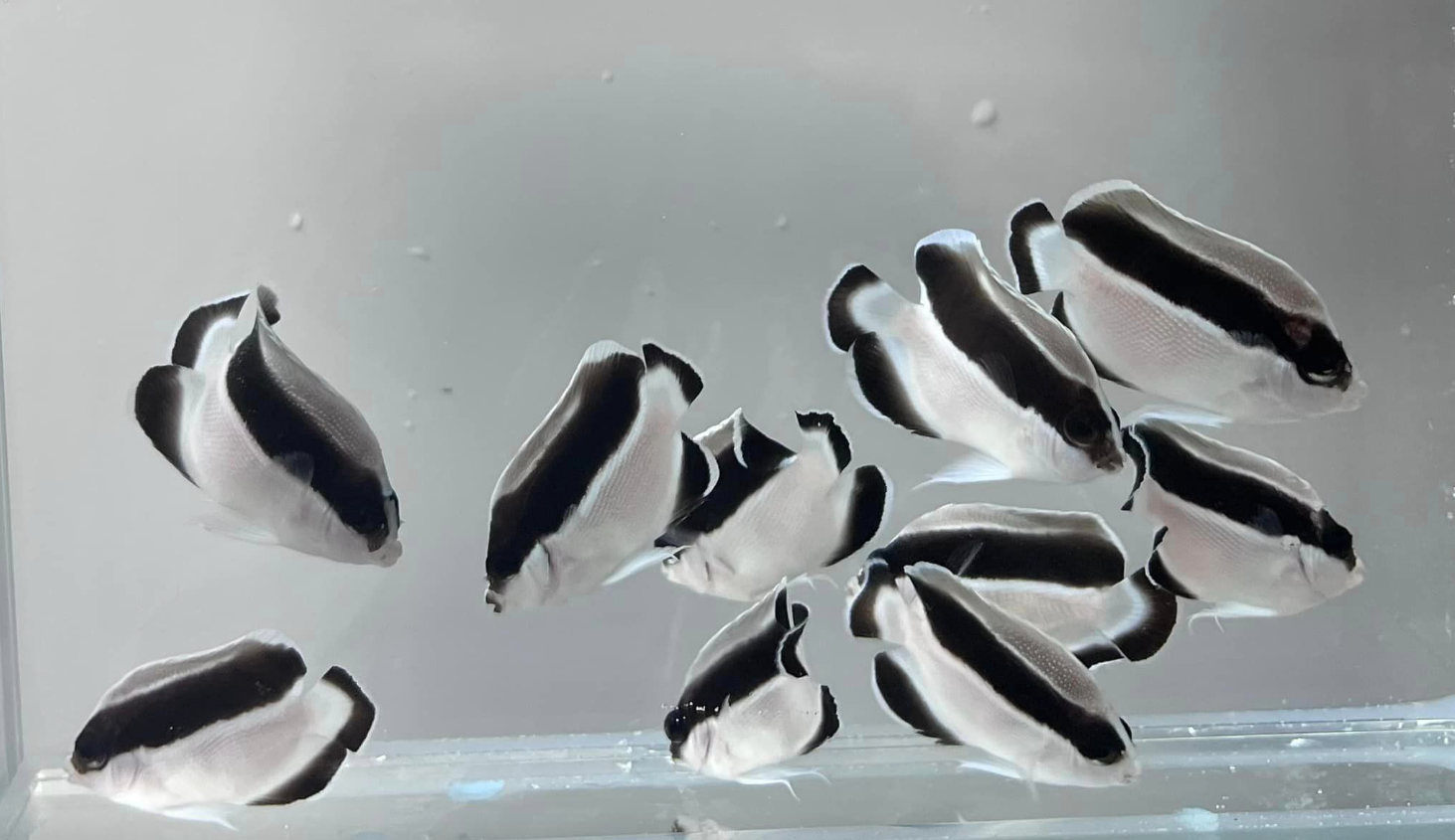If you live in a small apartment, stay in university halls, or simply don’t have much space to play with, you might wonder if a nano fish tank would make a practical addition to your home.
This guide reveals the unexpected benefits and challenges of keeping a nano aquarium, including care differences from larger tanks, suitable species you could keep in your mini setup, and much more.
Keep reading to discover five surprising facts about nano tanks to help you decide whether one of these small aquariums is the right choice for you.
Key Takeaways
- Thanks to their diminutive size, nano aquariums are popular for their space-saving benefits and the creative aquascaping they allow. However, the smaller water volume demands vigilant care and frequent maintenance.
- Key challenges in nano tank care include managing water quality through frequent testing, carrying out partial water changes, and ensuring effective filtration systems are in place due to less dilution of pollutants.
- When selecting inhabitants for a nano aquarium, you must consider the adult size of the fish you’ve chosen and their need for swimming space. Opt for slow-growing plants and compatible fish species to prevent overcrowding and ensure a balanced ecosystem.
What Is a Nano Aquarium?
First of all, what is a nano tank?
Nano aquariums are simply small fish tanks. There are two different nano tanks in the hobby:
- Under 5 gallons
- From 5 to 15 gallons
These tiny tanks have gained huge popularity among aquarium enthusiasts, largely because of their compact size and endless design possibilities. However, just because a tank is very small doesn’t mean it’s easier to care for than a larger setup. In fact, nano tanks need frequent maintenance to keep the water hygienic and safe for your fish.
Now, let’s reveal some surprising facts about nano tanks you probably don’t know!
Innovative Design Possibilities
Nano aquariums provide the perfect canvas for creative design and aquascaping. Thanks to that small size, hobbyists can experiment with unique hardscape materials and intricate layouts, using unusual rocks, miniature ornaments, and driftwood.
Effective aquascaping in small tanks often emphasizes perspective and depth to create visually stunning landscapes, even though space is very limited. You can further enhance the aesthetics of your nano tank by taking advantage of recent advancements in LED lighting technology, including customizable intensity levels and color spectrums.
Essentially, nano aquariums are miniature showcases for your artistic expression, as well as providing a balanced, enclosed ecosystem for myriad different species.
Unique Care Differences
Although caring for nano tanks does share similarities with larger setups, there are several important differences you should be aware of.
One major consideration is water parameters. Nano aquariums are far more susceptible to wild fluctuations in nutrient levels, pH, and water temperature thanks to their smaller water volume.
As all experienced aquarists know, maintaining stable water parameters within your tank is crucial for the health and well-being of your fish and other aquatic livestock. That’s why you must check the parameters within your aquarium every week using an aquarium water testing kit.
That’s even more critical in nano setups because of their comparatively low water volume. In a large tank, fish waste and other pollutants are absorbed more readily in the larger volume of water. However, there is not as much water in a nano tank, so harmful chemicals accumulate much more quickly and in higher concentrations. For that reason, nano tanks generally need more regular water changes.
Filtration is another important consideration. A nano aquarium needs a very efficient filtration system that provides sufficient biological and mechanical filtration without taking up too much space. I recommend using a sponge or hang-on-back (HOB) filter because they are small, reliable, and easy to maintain.
Stocking Challenges
Stocking a nano fish tank presents a unique challenge you don’t face with a larger aquarium. The limited space at your disposal restricts the number and size of fish and invertebrates that can live in the tank.
Remember that many small species are shoaling or schooling fish that need plenty of swimming space to be happy, and a nano tank is simply too small to accommodate them. The same applies to many larger and more active species that will not thrive if they don’t have room to swim and feel too confined.
You also need to carefully consider the compatibility of the fish and invertebrates you keep to prevent territorial disputes and aggression.
Schooling vs. Centerpiece Fish
Your first decision as a nano tank owner is whether or not you should choose a single centerpiece fish or a small group of schooling fish.
- Schooling or shoaling fish move around in a group formation, which is a glorious sight in your home tank and really catches the eye.
- Centerpiece fish are usually more flamboyant, like bettas, for example. Your centerpiece fish is most likely the only fish in your nano tank, or it could be the only species. These exhibitionists usually have beautiful colors or interesting behaviors to capture your attention, such as the puffer fish’s ability to puff itself into a ball and the betta’s habit of flaring at his reflection.
Whatever species you choose, always double-check the fish’s preferred habitat, especially when stocking a nano tank. Remember that the fish you buy in your local fish store are usually juveniles with plenty of growing to do, so you must find out what the fish’s adult size will be.
Don’t make the mistake of bringing home a two-inch-long fish only to find it grows into a massive six-incher within a year or so, which is far too big for a nano tank!
Fish for Your Nano Tank
Here are some fish species that can do well in nano tanks.
- Kerri Blue Emperor tetras – rare and beautiful
- Green Kubotai rasboras – ideal for Iwagumi aquascapes or set against a black backdrop
- Galaxy Koi betta – exotic-looking fish with unique coloration
- Midnight Black Moscow guppies – a jet black showstopper with a long, flowing tail
- Medaka Platinum Blue ricefish – a rare, iridescent Japanese fish
- Neon Green tetra – dainty fish that color up dramatically under aquarium lights
- Orange Speckled Mickey Mouse platy – brilliant orange color looks striking against lush planting
- Rocket Clown Killifish – beautiful striped jumpers that need a tight-fitting lid
- Celestial Pearl danios – gorgeous pearlescent spotted natives of Myanmar
- Bumblebee goby – beautiful bumblebee-like appearance but needs a 10-gallon nano setup
You might also want to consider adding a few shrimp and snails, which do very well in nano tanks. These peaceful critters are my go-to choice for a nano tank housing an aggressive betta since neither one can harm the other, and the inverts make good company for the fish.
Plant Choices
Live plants don’t just look beautiful in a nano tank. The plants perform a critical role since they help keep the water clean by absorbing nitrates as nutrients. Live plants also absorb carbon dioxide and give off valuable oxygen during photosynthesis.
In addition, many brightly-colored fish species look especially striking when shown off against a lush green background of plants waving in the current.
However, selecting the right plants for a nano setup needs careful consideration. The last thing you want is to choose plants that grow rapidly and quickly overrun a small setup. So, ideally, you want small, slow-growing plants that won’t get too big and require minimal maintenance.
Good choices for nano tanks include Java Fern, Anubias, and Marimo Moss balls since they thrive in minimalistic setups with limited lighting and nutrients.
Whatever plant species you go for, you’ll need to keep them well-maintained to prevent overgrowth and keep them healthy. You’ll need to prune, trim, thin out, and occasionally replant life plants to keep the tank looking good and prevent overcrowding.
Additionally, supplementing the plants with liquid fertilizers and CO2 is often necessary, remembering to adjust the dosage to suit the smaller water volume.
Educational and Therapeutic Benefits
Despite their small size, nano aquariums can bring educational and therapeutic benefits for aquarists of all ages.
Many school classrooms have a nano tank, providing a window into the natural world for kids and allowing them to observe the behaviors and interactions of aquatic life up close. Offices, dental clinics, GP surgeries, and veterinary clinics also often have small aquariums on display, offering a calming and engaging environment for their workers and patients.
Keeping a nano tank in the home can be a rewarding and meditative hobby. The soothing sound of the water, the gentle swaying of aquatic plants, and the vibrant colors of fish and invertebrates combine to create a tranquil atmosphere that promotes relaxation and stress relief.
Final Thoughts
So, there you have it! Keeping a nano aquarium in your home or office offers many benefits, from its educational and therapeutic value to its unique, innovative design possibilities.
That said, nano tanks also come with lots of challenges for the hobbyist when it comes to maintenance and the choice of suitable species to live there. By understanding these surprising facts, you can create a wonderful, thriving miniature ecosystem that can bring you endless enjoyment and fun.



